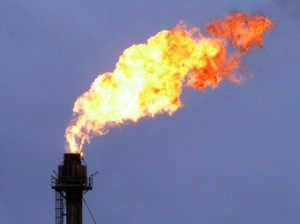 Natural gas futures extended yesterdays gains as freezing cold weather continued to sweep across most of the densely-populated US areas, stoking demand for the power-station fuel, as Americans crank up the heating.
Natural gas futures extended yesterdays gains as freezing cold weather continued to sweep across most of the densely-populated US areas, stoking demand for the power-station fuel, as Americans crank up the heating.
On the New York Mercantile Exchange (NYMEX), natural gas for delivery in April rose by 0.16% to trade at $4.675 per million British thermal units by 08:48 GMT. Natural gas futures hit a session high at $4.721 per mBtu, while day’s low was touched at $4.623 per mBtu.
Natural gas was down 26% last week, the biggest drop since December 1996 and settled 5.5% lower in February, after adding 26% last year, the best performance since 2005 and second straight annual advance.
Short-term weather outlook
NatGasWeather.com reported on March 5th that the cold air will probably remain anchored over the northern US until the end of the week, as several weak weather systems are expected to track through. Moderate to heavy showers are expected along the Gulf Coast, while at the same time some light snowfall will track across the Midwest.
Temperatures will warm over the central and eastern US by Friday and Saturday, temporarily easing natural gas and heating demand. However, another modest cold blast will sweep across the Midwest and Northeast this weekend, bringing back below-normal temperatures.
Another brief warm-up is expected to follow Monday into Tuesday before a much stronger and impressive cold outbreak blasts deep into the central and eastern US by the middle of next week. Over the coming week, only light snowfall will occur at times over the Midwest and portions of the Northeast. According to the website, even though temperatures won’t be exceptionally cold this week, strong natural gas and heating demand can be expected over the northern states and at times over the central and southern US.
Extended forecast
NatGasWeather.com’s extended forecast for the period ended March 18th called for a fresh cold blast to start the outlook period and to maintain below-normal temperatures across much of the northern US. Several winter storms are predicted to track across the US, each one of them bringing reinforcing doses of cold Canadian air.
The weather pattern will be quite active, with below-average temperatures over the northern US, likely to continue until the third week of March. Data also suggested that temperatures around March 14-15th will be much lower-than-normal deep into the South. According to the website, even though there may be few days of milder conditions, the pattern will remain a cold one and for now, there is no evidence that it will retreat anytime soon.
According to AccuWeather.com, temperatures in Cleveland on March 12th may bottom at 19 degrees Fahrenheit, 11 beneath average, while readings in Detroit may plunge to 20 degrees Fahrenheit, below the average of 30. The low in New York is expected to be 23 degrees Fahrenheit, 11 below normal.
When cold weather is expected, natural gas surges as increased electricity demand to power air-conditioning calls for more supply of the fuel, which is used for a quarter of U.S. electricity generation. Above-average readings in the winter season have the opposite effect. Consumption usually picks up from November through March. According to the Energy Information Administration, power generation accounts for 32% of U.S. gas demand and 49% of U.S. households use the energy source for heating.
US gas inventories levels
The Energy Information Administration reported on Thursday that US natural gas inventories fell by 95 billion cubic feet in the seven days through February 21st, below the median analyst’ forecast of 102 billion cubic feet in a Bloomberg survey.
Total gas held in US underground storage hubs fell to 1.348 trillion cubic feet. US gas stockpiles were 40.2% below last year’s amount of 2.253 trillion cubic feet during the comparable week. The deficit to the five-year average widened to 34.5%, up from 33.9% a week earlier.
Inventories at the East Region received a net withdrawal of 78 bcf and fell to 607 bcf, 37.3% below the five-year average of 968 billion cubic feet. Stockpiles in the West Region fell by 12 bcf to 217 bcf and were 31.3% beneath the average. Inventories at the Producing Region slid by 5 bcf. At 524 bcf, they were 32.4% below the five-year average amount of 775 billion cubic feet.
On February 24, the US investment bank Goldman Sachs lowered its end-of-March inventory levels’ forecast for a third time to 1 trillion cubic feet, down from 1.2 trillion. The bank previously trimmed its forecast to 1.2 trillion from an earlier estimate of 1.39 trillion cubic feet, while the initial estimate was 1.61 trillion cubic feet.





